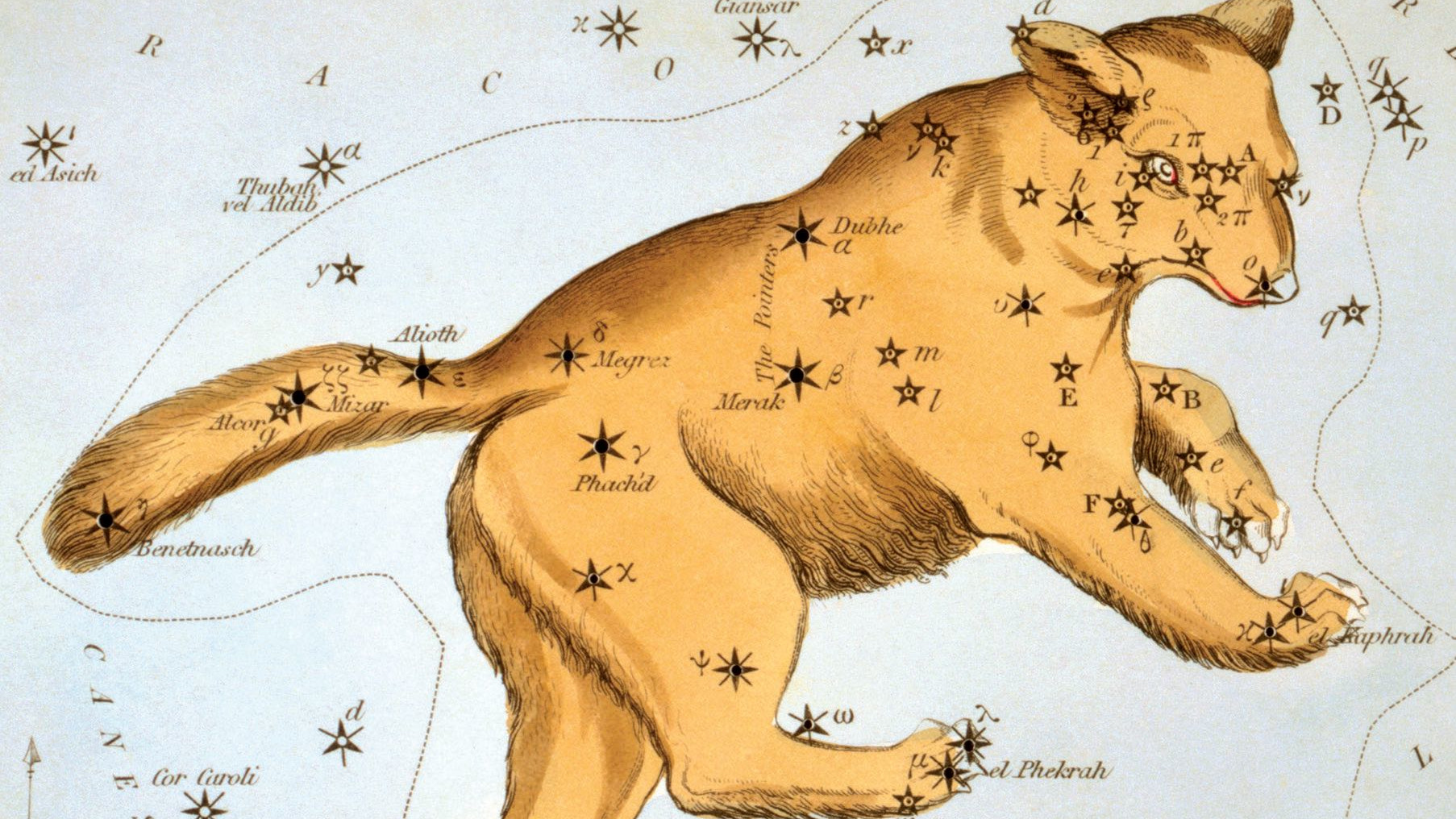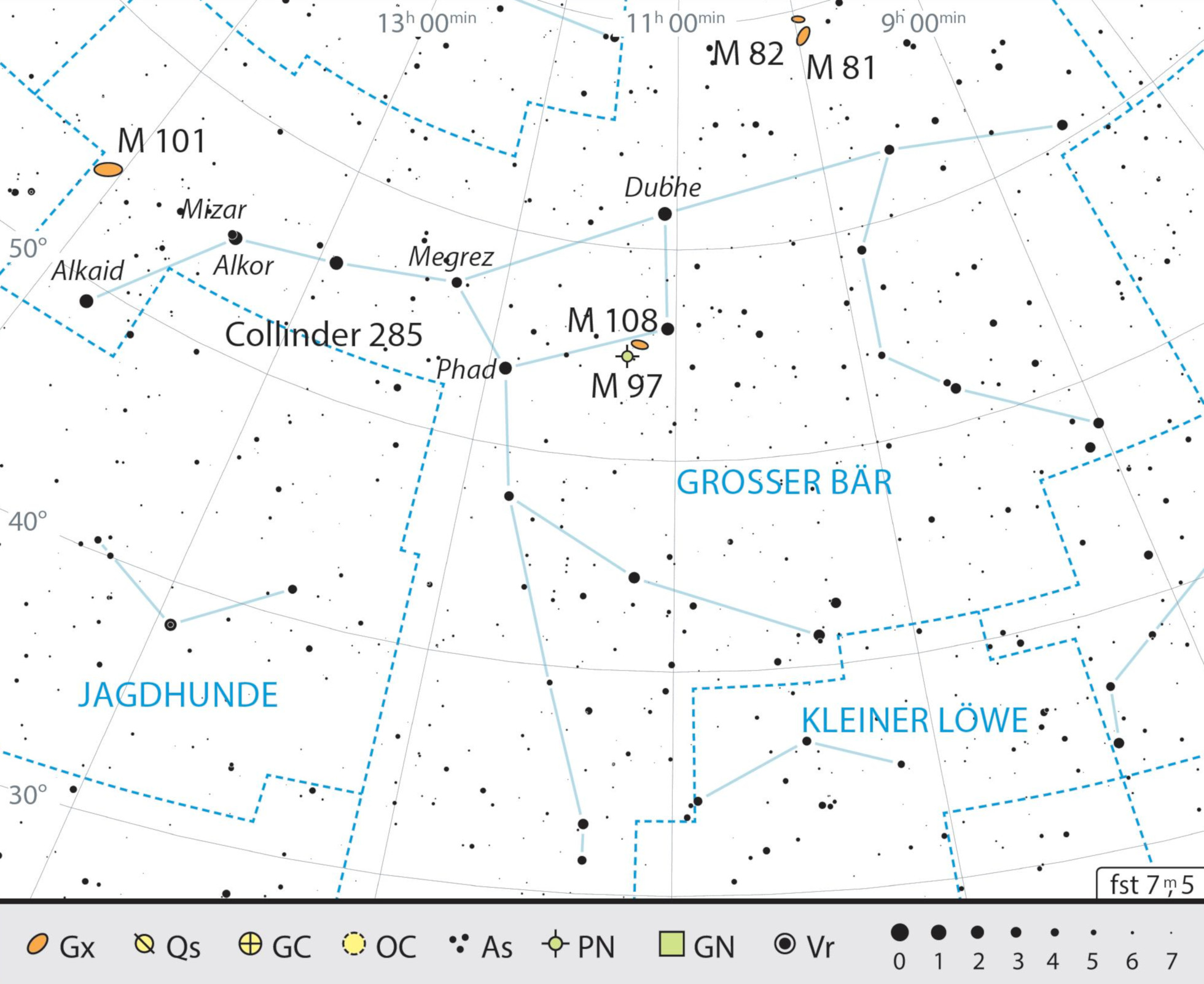Ursa Major
No group of stars is as well-known as the Big Dipper. It belongs to Ursa Major, is part of a star cluster, and has galaxies on board.
 At the rear of Ursa Major there is the most well-known asterism, or grouping of stars, the Big Dipper.
At the rear of Ursa Major there is the most well-known asterism, or grouping of stars, the Big Dipper.The Big Dipper is indisputably the most famous asterism in the night sky. Everyone recognises the arrangement of seven bright stars, which resembles a wheelbarrow. The Big Dipper is not a constellation in its own right, but part of the constellation of Ursa Major. In fact, the Big Dipper asterism forms just the hindquarters and the (anatomically overlong) tail of the beast. While his head is quite hard to spot in the night sky, the paws can be easily identified by three striking pairs of stars in the direction of Leo.
Historically, however, the Big Dipper actually came into existence before Ursa Major. The Sumerian word MAR.GID.DA (meaning “pull the chariot”) can be found in the astronomical compendium MUL.APIN, which dates back to the Middle Babylonian period and was compiled around the year 1000 BC. In Homer's epic the Odyssey, which appeared around 700 BC, the bear finally appears in the western night sky. On his ten-year journey, Odysseus used the stars to navigate, always keeping "the bear whom others call the wagon" to his left.
Zeus’ lover or nurse
The most famous Greek myth about Ursa Major is, as is so often the case, about the father of the gods Zeus, who fell in love with the nymph Callisto. The affair resulted in a son by the name of Arkas, and as punishment, Zeus' wife Hera transformed the beautiful nymph into a wild bear. 15 years later, Callisto's young son had become a hunter, but before he could kill his own mother, Zeus also turned Arkas into a bear and sent both beasts to the firmament. This was how Ursa Major and Ursa Minor with the disproportionately long tails came into being.
According to another version, Ursa Major represents the nymph Helike who, together with Cynosure, raised Zeus, the son of the gods, hiding him from his father Kronos on the island of Crete. In gratitude, they were immortalised as two beasts in the sky.
A chariot full of colour
Just as every spring, constellations Leo and Virgo, among others, team up with galaxies, Ursa Major, which is now directly above our heads at the zenith, also keeps ready a few fine examples of distant galaxies. In particular, we should mention M101, M108 (with the Owl Nebula M97 nearby) and the galaxy pair M81 and M82. Observers of double stars won’t be able to resist Mizar and its companion Alkor, because each component is itself a multiple system – albeit not visible with a telescope – so that the pair forms a sextuple system. It is a little-known fact that five of the seven Big Dipper stars form the core of a star cluster that is just 80 light years away. This is known as Collinder 285 or the Ursa Major Moving Group.
 Outline map of the constellation of Ursa Major with our observing recommendations. J. Scholten
Outline map of the constellation of Ursa Major with our observing recommendations. J. ScholtenAuthor: Nico Schmidt / Licence: Oculum-Verlag GmbH
